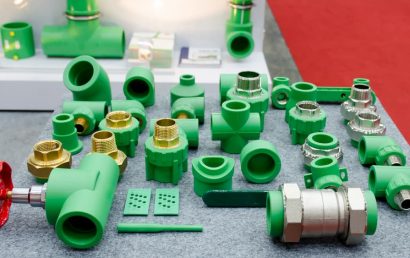Understanding Stainless Steel Galling
The two starring ingredients in stainless steel are nickel and chromium. Thanks to them, this modified steel alloy is one of the most resilient metals in use today. But stainless steel galling can take a part or component and ruin it beyond use. Fortunately, with thermal spray protective coatings, stainless steel can have a much longer and productive life.
A Closer Look at Stainless Steel
The nickel and chromium ingredients in stainless steel help protect it from water induced rust and from acid induced corrosion. The “passive layer” or “passive film”, a thin surface layer of chromium produced oxide, helps prevent surface corrosion. More chromium – the more resistance. Other ingredients that can be contained within stainless steel are manganese, silicon, and carbon.
As evidenced by its name, stainless steel is also resistant to staining. Its exuberant level of endurance puts it above many other metals in any number of applications. Combined with its other favorable characteristics of flexibility and strength, it is exceedingly popular for use in modern construction and, for large, high-impact buildings, as exterior cladding. But it also has a place in the world of interior design and is commonly used for backsplashes, countertops, handrails, and other products.
Examining Galling
To avoid hours of reworking and headaches, precautions must be taken when using stainless steel parts and components. Lack of planning or adequate protection for the stainless steel can spell unnecessary downtime, heightened replacement or repair costs, excessive maintenance costs, and more. The reason for all of this is that stainless steel, despite its many favorable characteristics, can fall victim to galling.
When two surfaces move together and excess friction is caused, the type of wear that occurs is called galling. It can happen when fitting a pump into housing or installing of bolt into a threaded hole. Any material can fall victim to galling, but it is prevalent with stainless steel.
If galling reaches a severe point, parts or components may be unremovable because they have seized – they are, in essence, bonded together. This phenomenon is also referred to as “cold welding”. The parts act like they’ve been welded together even though nothing ever heated up.
The Causes of Galling
Galling can be caused by heat buildup or interference because it is initially caused by friction. There are some common triggers that make galling more likely:
- The threading together of soft materials
- Reusing over tightened hardware
- Debris in the thread
During shipping, threads can be damaged as another trigger for galling. Frequently, shipments are protected from the outside environment by the manufacturer and the shipping company. But if, within a bag, many bolts are packaged together and shipped, their threads grind and rub together from the movement caused during transport. To avoid using a part such as this, it’s good to look at fittings and hardware closely before attempting installation.
There Is Good News!
Wear coatings can be applied to stainless steel surfaces to help prevent against galling. Nitriding coatings and chromium deposits help to change the characteristics of stainless steel to improve galling and wear resistance.
Industries currently using protective coatings to further the life of their stainless steel surfaces are (as an example) the oil and gas industry, the automotive industry, and the gas turbine engine industry.
A&A Coatings can coat your stainless steel parts and components with the appropriate thermal spray protective coating to discourage galling. Contact us today to find out how, through our thermal spray methods, you can protect your business, your parts, and your bottom line.



